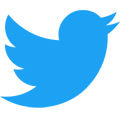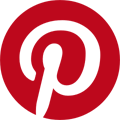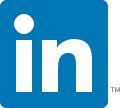The quality of your social media images matters, especially when your goal is to maintain a consistent brand image on all channels. In this day and age, posting poor-quality images can damage your results. And there is no excuse.
Let’s explore how quality images can boost engagement on social media and how quickly you can create them. And to save you time in finding out the image sizes for all of the key networks, we’ve got a guide for you to keep too!
Social media images are key to engagement
Images vs text | 1:0
So, why do images draw us in more than plain text? Well, there are two reasons images hold the power to drive engagement.
The first is based on emotion - images are much better at putting a message across than plain copy. The right picture can give a strong introduction to the topic you cover in your social media post or article and helps the audience to relate to it before reading what it is about.
The second is all about filtering and skimming through content faster. As they say, an image can tell 1,000 words, so any data, strategies, and examples are best portrayed visually.
Create social media images with ease
If you aren’t already using original images in your posts, there are quite a few web apps that can help you create them, even if you aren't a designer. For those occasions, we prefer to use Canva. This mighty design suite has a very nice and extensive collection of free templates, with the option to purchase images and premium templates as well.
To help you evaluate how successful your images are, it is handy to keep track of how much engagement each post gets (shares, likes and replies). Try experimenting with posting times, image types as well as colors and the copy accompanying the images.
Of course, we’d recommend using a social media management tool, as it makes it much easier to track your best-performing posts across platforms to also see what kind of messaging works best.
A quick guide to optimising social media images
It’s possible to use social media for some cost-free brand building if you take the time to create and optimize your social media images and content. There are a number of content creation tools built with social media in mind. They can help you to improve your images, writing and consequently, the online image of your brand.
You can also explore the tools for creating social media graphics to improve your design skills and create images or videos to engage followers.
First, just compile a list of the social media networks you are active on, then follow the simple instructions below.
Image sizing tips for social media images
It is vital that your brand imagery remains consistent across the different social media platforms to ensure that your message is coherent and appears professional. We also created a social media icons blog to guide you when using official logos for presentations and clients.
We’ve listed the image sizing guidelines for all major social media networks including Twitter, Facebook, Instagram, LinkedIn, Google+, Pinterest and YouTube below.

Social media image types
Profile photos should match your corporate logo as closely as possible (size, colors, style) and be the same on all social media networks. Keep in mind that the size of this image is rather small and will appear next to the posts and comments you publish, so make sure it scales down well.
Header photo (cover photo) usually appears at the top of your page. This is the place where you can get creative and use eye-catchy, current images. It’s recommended to update headers when big events, campaigns or key holidays come along - just make sure you are always in sync with your brand guidelines.
Post photos/images: these are the images that you add to your social media posts to make them more engaging. Each network has a specific size for these, so it's best to optimize them for each, especially if you are using the same image on multiple networks.
Sizing guidelines for each social media network
 Twitter
Twitter
- Profile photo: 400 x 400 pixels
- Header photo: 1500 x 500 pixels
- Post photo/in-stream photo: 1200 x 600 pixels or smaller (keep a 2:1 ratio)
 Facebook
Facebook
- Profile picture: 180 x 180 pixels
- Cover photo: 851 x 315 pixels (maximum file size of 100 KB)
- Facebook Ads (landscape): 1200 x 630 pixels
- Desktop newsfeed: 1200 x 628 pixels
 Instagram
Instagram
- Profile picture: 400 x 400 pixels
- Photo size: at least 1080 pixels wide or tall
- Landscape photos: 1350 x 1080
- Portrait photos: 1080 x 1350
- Instagram Stories: 1080 x 1920
 Google+
Google+
- Profile image: 250 x 250 pixels
- Cover picture: 1080 x 608 pixels
- Post image: minimum width 497 pixels (images are always scaled down to this size)
 Pinterest
Pinterest
- Profile picture: 400 x 400 pixels
- Pin/photo sizes: a width of 735 pixels (with scaled height)
 YouTube
YouTube
- Channel icon: 800 x 800 pixels (this will get rendered to 98 x 98 pixels)
- Video thumbnail: 1280 x 760 pixels
- Channel art: 2560 x 1440 pixels
(Make sure you check the template as cropping varies widely from TV to mobile to desktop)
 LinkedIn
LinkedIn
- Company logo: 400 x 400 pixels
- Company banner image: 1536 x 768 pixels
- Profile picture: 500 x 500 pixels
- Background photo: 1400 x 425 pixels
- Images for posts: 1200 x 628 pixels

